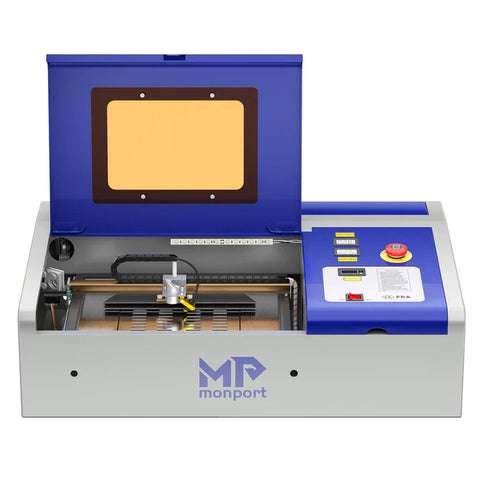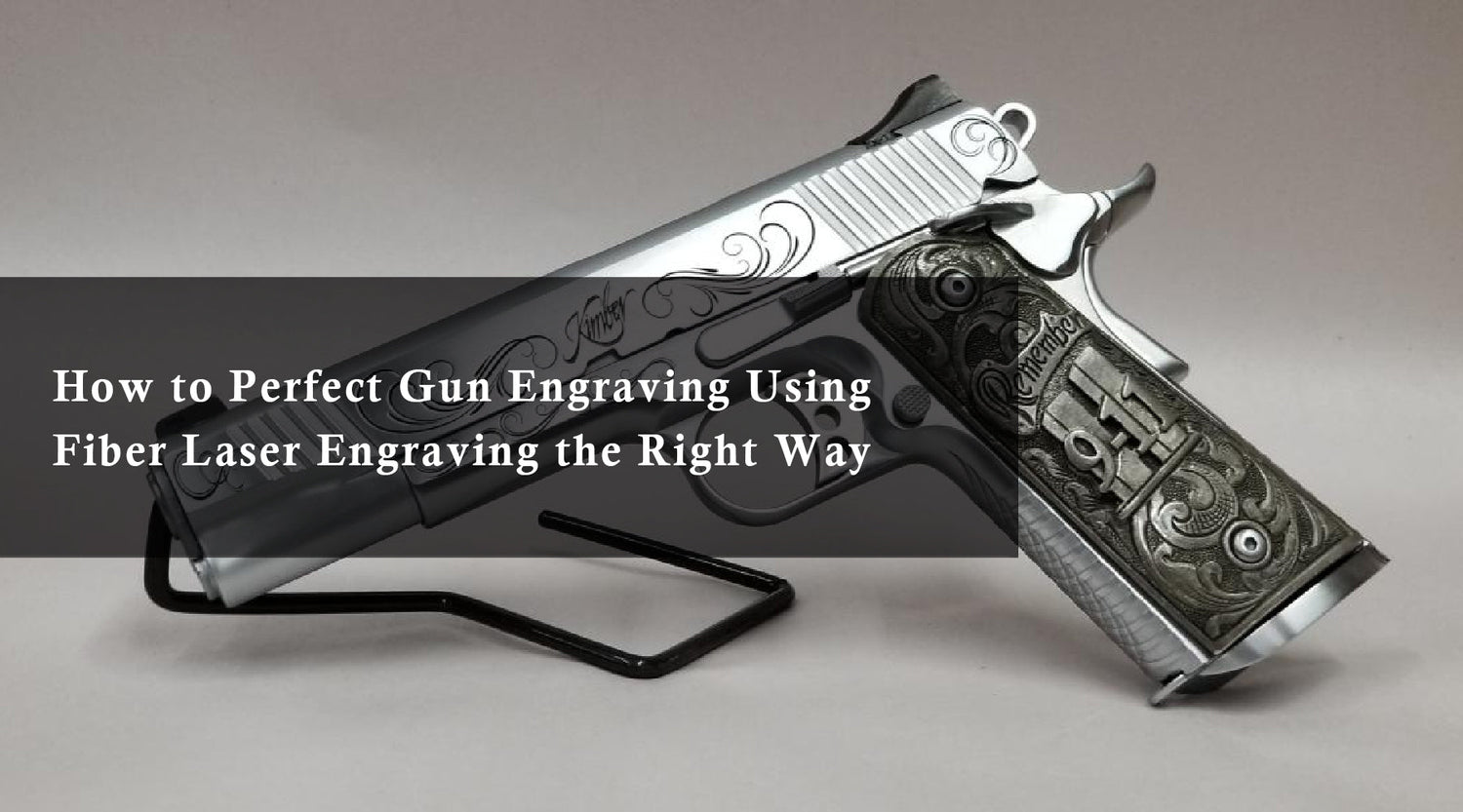Home laser cutters have become increasingly popular in recent years, offering individuals a versatile tool for a wide range of creative projects. From engraving and cutting wood to marking leather and glass, laser wood engravers can bring your ideas to life with precision and efficiency.
If you're considering purchasing a home laser cutter, it's important to choose a model that is both powerful and user-friendly. In this guide, we'll explore the key features to look for the best entry-level laser engraver and recommend the Monport 40W Desktop Laser Engraver as a top choice.
What is a Home Laser Cutter?
A home laser wood engraver is a compact and affordable best entry-level laser engraver machine that uses a focused beam of light to cut or engrave materials. These machines are typically smaller and less powerful than industrial laser cutters, making them suitable for home use.

Types of Home Laser Cutters
There are two main types of home laser cutters: CO2 lasers and fiber lasers.
- CO2 Lasers: These lasers are best suited for non-metallic materials such as wood, acrylic, leather, fabric, and certain plastics.
- Fiber Lasers: Fiber lasers are designed for cutting and marking metals, including stainless steel, aluminum, and brass.
Factors to Consider When Choosing a Home Laser Cutter
- Laser Power: The laser power determines the thickness of materials you can cut and engrave. Higher power lasers are more versatile but can also be more expensive.
- Work Area Size: Consider the size of the materials you plan to work with to ensure that the machine's work area is large enough.
- Features: Look for features such as automatic focusing, rotary axes, and compatibility with various software programs.
- Price: Home laser cutters vary in price, so set a budget and compare features and specifications.
- Cutting Speed: A faster cutting speed allows you to complete projects more efficiently. Look for a machine with a speed of at least 300mm/s.
- Software Compatibility: Ensure the laser cutter is compatible with popular design software like Lightburn or CorelDRAW.
- Safety Features: Safety features such as emergency stop buttons and smoke extraction systems are essential for a safe working environment.
- Ease of Use: A user-friendly interface and intuitive controls make it easier to learn and operate the machine.
Monport 40W Desktop Laser Engraver: A Top Choice for Beginners
The Monport 40W Desktop laser wood engraver is an excellent option for those seeking a powerful and affordable home laser wood engraver. This machine offers exceptional speed and precision, making it suitable for a wide range of projects.
Key Features:
- Powerful 40W Laser: Cuts through various materials with ease.
- High Speed: Engraves at up to 350mm/s for efficient project completion.
- Lightburn Compatibility: Works seamlessly with popular design software.
- Red Dot Guidance: Ensures accurate alignment and positioning.
- Dual Work Bed: Accommodates different material sizes and shapes.
- Built-in Ventilation: Improves laser performance and creates a safer working environment.
Getting Started with Your Home Laser Cutter
Once you've purchased your home laser cutter, it's time to start experimenting. Here are a few tips to get you started:

- Read the Manual: Familiarize yourself with the machine's features and safety guidelines.
- Start with Simple Projects: Begin with basic projects to gain confidence and experience.
- Experiment with Different Materials: Try engraving and cutting various materials to discover their unique properties.
- Join Online Communities: Connect with other laser cutter enthusiasts for tips, advice, and inspiration.
Machine Guide Settings for Different Materials
| Material | Laser Power (W) | Speed (mm/s) | Pass Count |
|---|---|---|---|
| Acrylic (3mm) | 30 | 200 | 1 |
| Wood (5mm) | 40 | 150 | 2 |
| Leather (2mm) | 35 | 250 | 1 |
| Glass (2mm) | 40 | 100 | 3 |
| MDF (3mm) | 35 | 180 | 2 |
Additional Tips
- Safety First: Always wear safety glasses and follow the manufacturer's safety guidelines when operating a laser cutter.
- Ventilation: Ensure proper ventilation in your workspace to remove smoke and fumes.
- Material Preparation: Clean and prepare your materials before engraving or cutting to avoid smudges or imperfections.
- Design Optimization: Optimize your designs for laser cutting by using vector graphics and avoiding complex shapes.
- Regular Maintenance: Clean the laser head and optics regularly to maintain optimal performance.
Frequently Asked Questions (FAQs)
-
Can I use a home laser cutter commercially?
Yes, but check local regulations and licensing requirements. -
What’s the difference between cutting and engraving?
Engraving removes surface material to create a design; cutting separates material completely. -
Can I adjust settings on a beginner laser cutter?
Yes, most machines allow power, speed, and focus customization. -
How long to learn laser cutting?
Basics can be learned quickly, but mastery comes with practice. -
Common beginner mistakes?
Using incorrect settings, not cleaning the machine, or ignoring safety precautions.
Conclusion
Home laser cutters can be a valuable tool for DIY enthusiasts and creative professionals. By choosing a high-quality best entry-level laser engraver machine like the Monport 40W Desktop Laser Engraver, you can unlock endless possibilities for your projects.With a little practice and experimentation, you'll be able to create beautiful and unique items using your laser wood engraver.











